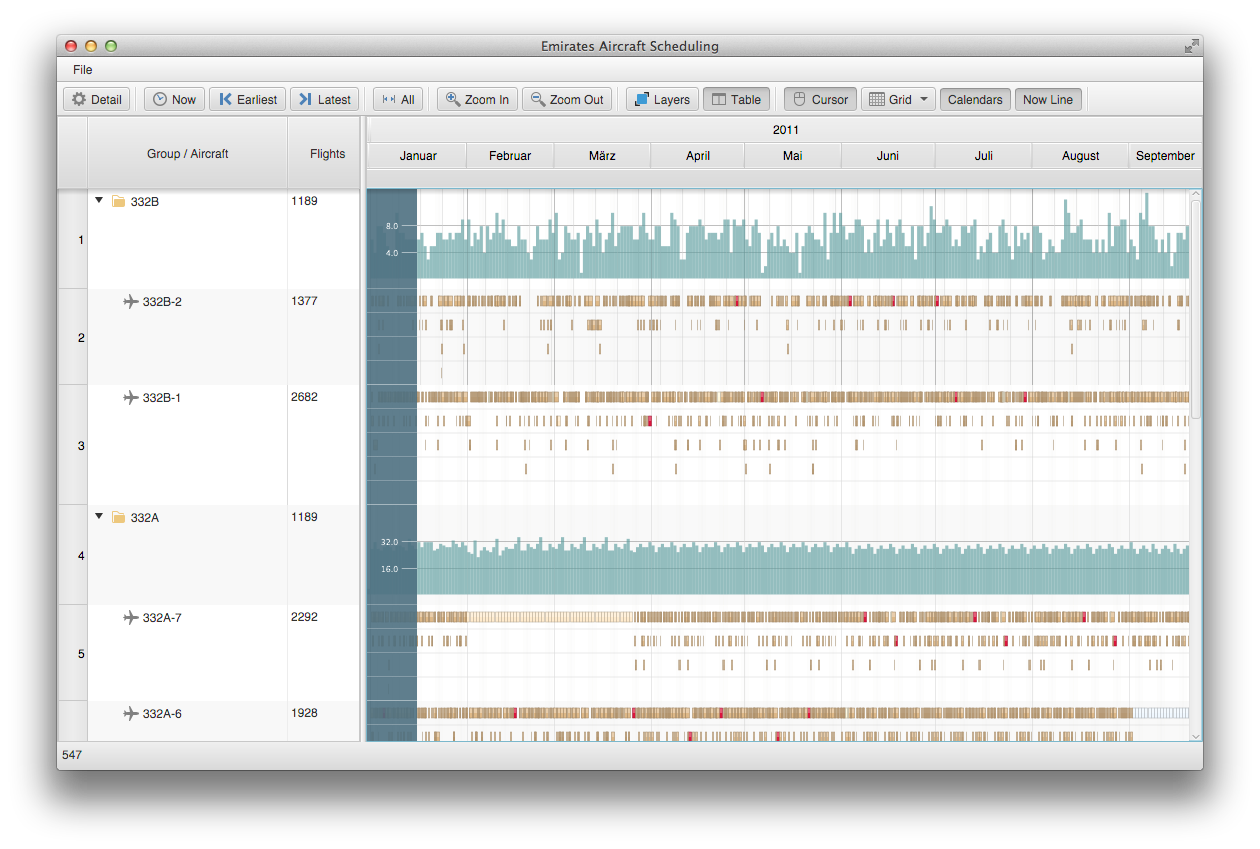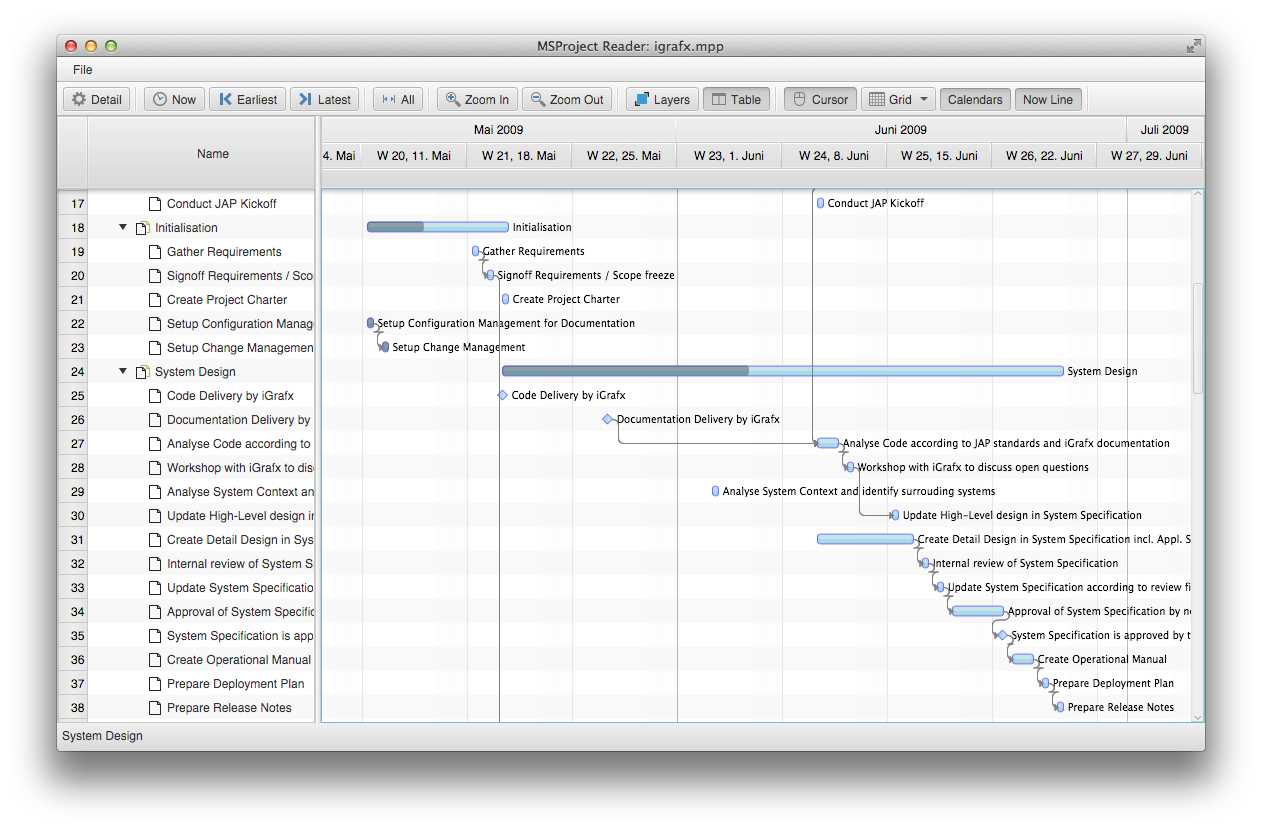
I finally managed to put together a 1.0.0 production-ready release of FlexGanttFX. After two early access releases at the beginning of the year I put in a lot of hours to get the framework to a maturity level that I deem to be high enough for real-world application development. The release can be downloaded from the product website at http://www.flexganttfx.com. I would recommend to run the three standalone demos in this distribution to get an idea of FlexGanttFX’s capabilities.
FlexGanttFX is much bigger than a regular JavaFX control. The view consists of 83 and the model of 58 classes. It could have been even bigger but during development I decided to contribute some of the custom controls to the ControlsFX project (e.g. StatusBar, PopOver, PlusMinusSlider, HiddenSidesPane, MasterDetailPane).
There were two events in the past that delayed the release: the first one was a requirement from an early adopter to use the graphics area of the Gantt chart standalone, without the tree table view on the left-hand side. They wanted to use it as an editor for creating classroom schedules. Even though this requirement delayed the release it turned out to be very beneficial for the overall design of the framework. In the end I came up with four different ways the graphics can be presented: single row, using a VBox, using a SplitPane, or using a ListView.
The second event was the release of JDK 8u20. Changes were made to the way CSS was applied / processed which caused many warning messages to be shown in the console (“…unable to resolve -fx-background-color …”). While most people only get these warnings I could actually see that the layout of the controls in the Gantt chart was messed up. I had to find work-arounds for these issues which took a long time. I still see these messages but they seem to be harmless now. If anyone can point me to the root of this problem I would very much appreciate it.
I would like to say a special thank you to Gilberto Gomez, Werner Lehmann, and Christian Hollmann of MINT Media who provided very valuable input during the development of FlexGanttFX. I would also like to say thank you to the entire JavaFX developer community, especially the guys from Oracle and ControlsFX (Jonathan Giles, Eugene Ryzhikov).



Hello, I am also experiencing the same layout problems and it is driving me insane. Could you please let me know what workarounds you took to solve it? Thanks in advance.
[…] Lemmermann has announced the 1.0.0 release of his (commercial) FlexGantt […]
[…] Lemmermann has announced the 1.0.0 release of his (commercial) FlexGantt […]
The code that I used for laying out my controls was smelly anyways. I cleaned it up / simplified it and now it works.